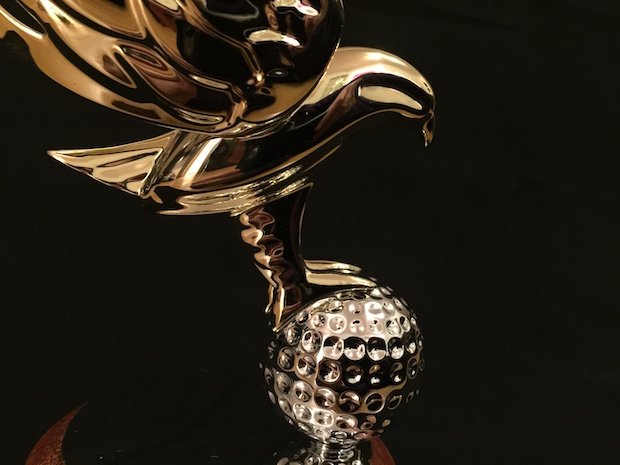Falcon Trophy
Malcolm Nicholls Ltd utilised 3D printing and 3D scanning technology to reproduce and 3D print trophies – 18 replica trophies to be exact! For an Abu Dhabi HSBC Championship-associated golf tournament.
Falcon Trophy
An exciting project that saw Malcolm Nicholls Ltd utilise 3D printing and 3D scanning technology to reproduce 18 3d Print trophies (replicas) for an Abu Dhabi HSBC Championship-associated golf tournament.
On the Abu Dhabi golfing circuit, the Falcon Trophy has long been synonymous with the Abu Dhabi HSBC Championship. The Pro-Am tournament serves as a supporting competition which precedes the main event. Event organisers wanted smaller versions of the Falcon Trophy to award winners of the curtain raiser tournament and briefed isodo3D about producing 18 quarter-size replicas, six for each of the next three tournaments.
Isodo3D worked along with Malcolm Nicholls Ltd when they found that the most cost-effective and non-compromising method was to print the falcon and golf ball and then hand turn the wooden plinths. A HP 3D Structured Light Scanner Pro S3 was used to scan the trophy and create the data required to print the trophy. Using our latest SLA technology a master model was printed.
3D Print Trophies – Case Study


Why Use Low Volume Production / Low Volume Manufacturing?
With the growing demand for Low Volume Production also known as low volume manufacturing and small batch production Malcolm Nicholls Ltd can produce 1 – 1000’s of parts.
If you’re looking for a one-off bespoke top-quality part such as a trophy, or you require 1000’s customised parts such as widgets, we have the solutions to suit your needs.
It is an increasingly popular option as it allows for a smaller investment in tooling and materials while providing fast access to the market. It also acts to bridge the gap between initial prototypes and mass production.
Historically, manufacturing components in low quantities has always been a costly exercise. With the advent of 3D printing and vacuum casting many constraints previously faced can now be significantly reduced. Technologies such as SLS (Stereolithography) and FDM (Fused Deposition Modelling) can now be used (especially for non-seen parts), to produce components in quantities as low as 1s and 2s and up to thousands, but still with exceptional material properties such as flame retardancy and high-heat requirements. Traditional design constraints, usually associated with injection mould tooling for example, can now be ignored enabling designers to be more efficient and reduce part count within assemblies.
Looking to Produce Multiple Parts?
We can produce anything from one to thousands